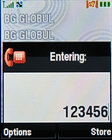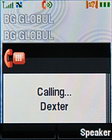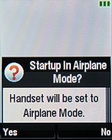Motorola SLVR L9 review: Not much has changed
Not much has changed
The plate is plastic, not metal this time
The keypad of L9 is on a plastic plate, not a metal one like in the previous L7 model. The other main difference is in the way the keys are divided, meaning they have small bulging lines between them and two bigger vertical ones.
The keypad is, as usual, made of two parts – functional and numerical. The functional part includes two soft keys on top, the 4-way circular D-pad with confirming center, which has become a proprietary Motorola solution, a FM radio key and the green “receiver” button on the left and a correction C/Back button and the red “receiver” button on the right side of the circle. Bellow those are the numerical keys. The keypad is easy to use and spacey enough to push the desired button and not make a mistake. Backlighting is perfect. It gets the keypad evenly illuminated in blue and makes it perfectly visible in the dark.




The keypad • the metal D-Pad • L9 keypad in the dark
The display is sufficient
Motorola SLVR L9 is equipped with a 2 inch TFT display, capable of displaying 256K colors and a resolution of 176 x 220 pixels. The exact same display was used in the Motorola L7 too. Well, as the saying goes: “if it ain’t broken, don’t fix it”. This holds true here. The display is good enough, the colors are vivid, the picture is clear and it gives enough space to visualize everything that needs to be shown. Of course, we could’ve asked for more, considering that most of the recent phones have finer displays, but we think this is enough as we are talking about a budget mobile after all. The backlighting of the display is good, too.


The display in bright light conditions and in dark
The main purpose of mobile phones is to make calls and L9 does that just fine. The sound during calls is good, signal strength is ok and the phone alerts of incoming calls loudly enough and with well-noticeable vibration if needed.
Yet another Motorola interface
The standby display of the phone offers a signal strength bar, ringing profile icon, battery strength bar, the operator name and a digital clock in the bottom. If you like, you can put in the middle a cross with the four ways of the metal D-pad with applications assigned to every way. The labels of the two functions assigned to the two soft keys are shown in the bottom.
A new thing in the L9 is the Juix interface which is used in the phone and is the new solution from Motorola. It is somewhat different from the previous user interface implemented in older models like L7. Opinions regarding this interface are controversial as some people consider it better and easy to navigate but others think it’s not that much of an improvement.
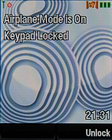
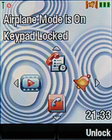
The stand-by display with and without the 4-way cross
The main menu is made of 3 x 3 matrix grid of animated icons. Motorola users will have no problems orientating in the phone as the manufacturer uses the same interface with slight changes in many models. Some of the sub-menus are made like tabs with 3 icons in line while others are just text lists. The one thing that leaves a big impression, though, is that the test phone has a pretty slow interface. Since we haven’t seen such a slow user interface in other recent Motorola mobiles, our best guess is that this dysfunction is restricted to our test unit only.
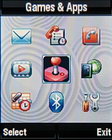
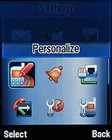
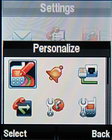
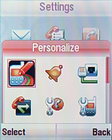
The main menu • Some of the available color skins
When inactive, the phone can start an animated screensaver but of course, this takes its toll on the battery so you will be better off with switching the screensaver option off. The phone also offers an Airplane mode which turns off all network services. You can set the phone to ask you every time you switch it on whether to start in airplane mode or not. A nice option is that you can switch to Airplane mode without restarting the handset.
Phonebook: nothing new here
The phonebook in Motorola SLVR L9 has no novelties at all. It is the same as in previous Motorola models, meaning that it can show phone and SIM contacts simultaneously, only phone contacts or only SIM ones. Searching is done by gradually typing the first letters of the desired contact’s name. Browsing through the phonebook is one nice thing here: using the “•” and “#” keys you switch between standard phonebook, emails and categories of contacts. In the phone this options is called filtering and can be very useful.
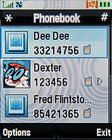
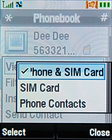
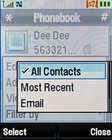

Phonebook list with thumbnails • choosing the contact’s source • filtering • phonebook list without pictures
When you create a new contact, the phone offers you fields for First Name, Last Name, Nickname, Number, Type of number (Mobile, Home, Work, Fax, Pager, Other), Email, Type of email (Personal, Work, Other), URL, Postal address, Type of postal address (Home, Work, Other), Category (General, Business, Personal, VIPs), Ringer ID, Picture, Birthday (does not copy it into the calendar). You can assign lots of numbers to one contact, not only one per type.
Reader comments
- tanmay
- 01 Apr 2015
- XuT
Is the motorola slvr L9 charger could support motorola L9 mobile?
- amaan
- 08 Oct 2010
- S9J
i need to format my phone how i dont
- Anonymous
- 05 Sep 2010
- 2@f
anyone please help if we can open .pdf files in motorola l9 slvr?
